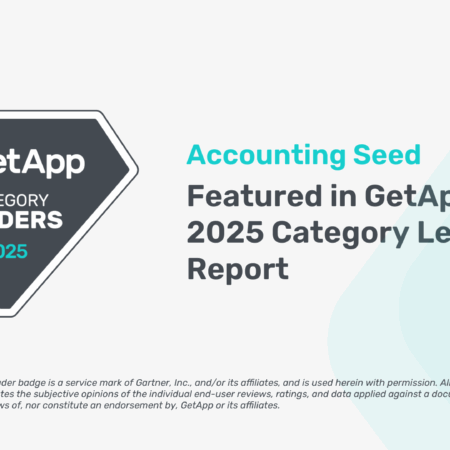
For small and mid-sized businesses (SMBs), accounts payable (AP) has traditionally been one of the most manual, time-consuming finance functions, costing up to 520 people-hours per year. As AP automation has helped eliminate much of the paperwork and data entry, many finance teams still face challenges around prioritization, cash flow optimization, and strategic decision-making.
Advances in machine learning—particularly large language models and pattern recognition systems—have made it possible to add analytical power to business processes that were previously just automated. AI adds a new dimension to AP: the ability to learn from patterns, make proactive recommendations, and help finance teams move from reactive processing to strategic cash management.
What AP automation delivers
Over the past decade, automation software has changed how SMBs handle payables. Here’s how these systems generally work:
Software captures invoice data: When invoices arrive as PDFs, images, spreadsheets, or emails, the system reads them and pulls out vendor details, invoice numbers, amounts, and line items. It then creates payable records for review, removing the need for manual data entry.
Invoices move through approval workflows: Based on set rules—like dollar thresholds, department assignments, or vendor categories—the system automatically routes invoices to the right approvers. No more manual forwarding or tracking.
Payments go out on schedule: Once approved, invoices are paid on their due dates using the appropriate method: ACH transfers, virtual cards, or printed checks.
Transactions reconcile automatically: Outgoing payments are matched against bank feed data, and the system marks transactions as cleared, cutting out the work of reconciling line by line.
Dashboards give real-time visibility: Finance teams can see outstanding payables, upcoming due dates, and approval statuses all in one place.
These capabilities have reduced AP processing time by 70%-80% in many organizations. Small finance teams can handle more invoices without increasing staff, and the risk of data entry errors drops considerably.
How AI improves AP decisions
AI-powered AP tools go beyond automation by analyzing data, spotting patterns, and guiding better decisions:
1. Learns your coding patterns and predicts GL assignments
While automation can extract data from invoices, AI takes this further by learning from your historical patterns. Over time, it predicts the correct GL codes and expense categories based on vendor, invoice type, and past coding decisions. When your AP clerk corrects a miscoded invoice, the system learns from that correction and becomes more accurate with each transaction. This adaptive learning means fewer exceptions over time and less manual intervention needed as the system gets smarter.
2. Detects duplicates and flags unusual patterns
AI excels at pattern recognition in ways that rule-based systems cannot. Rather than just flagging exact duplicate invoice numbers, AI can identify potential duplicates even when formatting differs slightly, or spot anomalies like:
- Invoice amounts that fall significantly outside the normal range for a vendor
- Unusual spikes in invoice volume from a particular supplier
- Mismatched vendor banking details that could signal fraud
For SMBs without dedicated fraud detection teams, this layer of continuous monitoring provides valuable protection against costly errors and fraudulent invoices.
3. Recommends payment timing to optimize cash flow
This is where AI delivers perhaps the greatest value for small businesses. Rather than simply paying bills on their due dates, AI analyzes your entire payables portfolio against multiple factors:
- Payment terms and early-payment discount opportunities (e.g., 2% discount if paid within 10 days)
- Due dates and late fee risks
- Current cash position and projected cash flow
- Vendor payment history
The system can then recommend which bills to pay in each cycle to maximize savings, avoid penalties, and optimize working capital. This kind of strategic payment planning is now accessible to lean finance operations through embedded AI.
4. Enables instant queries and payment visibility
AI makes it easier to access the information you need without running full reports. Finance teams can query payables by age, vendor, amount, or discount eligibility and get immediate answers. This instant visibility into your AP data helps with:
- Identifying which bills are overdue and by how long
- Tracking payment patterns and vendor spend over time
- Spotting which payments qualify for early-pay discounts
- Making faster decisions during budget reviews or cash flow planning
For SMB leaders managing cash flow tightly, having this information at their fingertips turns AP from a reactive process into a source of financial intelligence.
Benefits of applying AI to the AP function
AI opens up new advantages for finance teams:
Reduce risk without overloading staff. Continuous duplicate detection and anomaly monitoring protect against fraud and errors—oversight that small teams typically can’t maintain manually.
Make decisions faster. Instant queries and payment visibility mean finance leaders can answer cash flow questions and approve payments without waiting for reports.
Capture savings you’d otherwise miss. AI identifies early-payment discounts and optimal payment timing, turning AP from a cost center into a source of margin improvement.
Focus on strategy instead of tasks. When AI handles coding predictions and payment recommendations, your team has time for vendor negotiations, cash flow planning, and financial analysis.
Fewer than 5% of AP departments are fully automated today, yet 91% of mid-sized businesses plan to increase automation to boost efficiency and combat fraud. For SMBs, this represents a competitive opportunity.
Putting AI to work with Accounting Seed
For SMBs looking to implement these AI capabilities without enterprise complexity, AI Agents by Accounting Seed demonstrate how this technology can be embedded directly into your existing finance workflow.
The Bill Pay Agent embodies many of the strategic payment capabilities we’ve discussed. It identifies early-payment discounts, flags potential duplicate payables before processing, prioritizes bills to avoid late fees, and builds comprehensive payment proposals for approval. Because it’s working with unified Salesforce data, it has full visibility into your cash position and vendor relationships.
The Collections Agent extends similar intelligence to the receivables side, analyzing overdue invoices, predicting payment likelihood based on customer history, and automating dunning notices with attached statements. This helps improve both sides of cash flow management.
The GL Agent addresses another common friction point: the time finance teams spend digging through records to answer ad-hoc questions or close out the month. Using natural language queries, it can surface transaction details instantly, post or unpost records with simple commands, and help identify what needs attention to close periods faster.
The Support Agent tackles a subtler but real productivity drain—context-switching between work and documentation. By providing real-time, in-app guidance based on the Accounting SeedKnowledge Base, it keeps teams focused and reduces the learning curve for new features.
What makes the Accounting Seed approach particularly relevant for SMBs is that these agents work with Salesforce-native data, from lead to ledger. There are no complex integrations to manage, no data silos to reconcile, and no expensive middleware to maintain. Your AP, AR, and GL data already flows seamlessly through a single platform, making it AI-ready from day one.
What this means for your business
Automation laid the groundwork by eliminating manual data entry and routine tasks from the AP workflow. AI builds on that by adding adaptability and decision support. SMBs that adopt these tools build more resilient operations—ones that can spot risks early, protect cash flow, and make decisions with clarity.
Want to see what this looks like in practice? Explore Accounting Seed’s AI Agents to learn how they can help with payables, receivables, and more.
See Accounting Seed in action
See how accounting on Salesforce can eliminate the need for costly integrations—and silos of mismatched information—by sharing the same database as your CRM.



